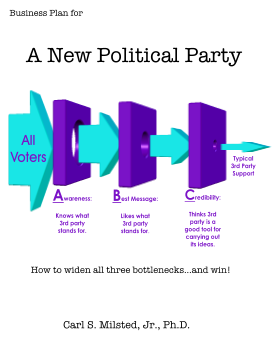The Grand Subsidy
Think of all the rotten cheese gone bad in government warehouses. Think of the other government programs where the government has bought up food and destroyed it. By consuming farm goods, the government raises food prices to subsidize farmers at the expense of the hungry.
The government does the same thing for capitalists!
What do capitalists do but provide capital? That is, they save wealth and then loan it out for the tools laborers use to produce products for consumers. When governments run deficits, they are consuming capital. Therefore, they are raising the price of capital: interest rates. This raises corporate profit rates since a corporation’s profits must keep up with or exceed the interest rate of conservative investments or the corporation will not be able to receive financing. True, an old corporation can stay in business by having its stock price plummet and the investors are stuck with a sunk cost, but new companies and new ventures require new investment capital. So over time corporate profits will catch up to interest rates.
As I write this, the U.S. government has amassed a debt of nearly 6 1/2 trillion dollars [in 2003, when this was written]! That is, 6 1/2 trillion dollars have gone to prop up the money lending class!
Some people say that this has occurred because of a grand conspiracy by the super rich, that the robber barons who met at Jeckyll Island to design the Federal Reserve system planned on turning their families into a new aristocracy by coaxing the government to go deep into debt.
Methinks it is a mistake to dwell on the actions of the “bad guys.” Such thinking leads to defeatism. The grand subsidy occurred because the Left was looking the wrong way. Once upon a time, low interest rates were known as the key to a progressive society. Unfortunately, many of the favored remedies of the past have been usury laws or inflation. Alas, the former reduces the supply of capital, while the latter is only a temporary fix, which results in even higher (real) interest rates in the long run, due to the extra risk. Further, the threat of inflation is a work program for the finance industry, as they try to second guess the actions of the Fed.
But the modern Left has been enamored by the economics of John Maynard Keynes. At the beginning of the Great Depression, he posited the idea that once the economy runs out of investment opportunities, it will go into a downward spiral as saved money rots in vaults and mattresses. The cure is to have the government “stimulate the economy” by deficit spending, creating artificial investment opportunities through research spending, and encouraging consumption in order to prevent excess savings. The legacy of Keynes can be heard every time an economic reporter talks of “consumer spending driving the economy.” (Environmentalists take note: blame the “consumer society” on the ideas of Keynes. I will have more to say on this in a later chapter.)
The Left embraced Keynesian economics because it called for more government “investment in the economy” and for welfare programs which increase consumer spending). Also, the theory justifies wealth redistribution on the hypothesis that the rich save more because their needs are satiated while the poor spend what they get to meet unfulfilled needs. (The second and later generation rich often have a negative savings rate as they either squander or give away what their ancestors have earned. The major error of Keynesian economics is that it fails to take time into full account.)
But while these progressive words are said and these “caring” programs are implemented, the core of the Keynesian program is the reduction of savings. The result is cuddly fascism: a right wing government that subsidizes the rich while doling out scraps to the poor and middle class. The appearance may be progressive, but the real result is a concentration of wealth and power to a small elite.
And there is more.
Further Reading
The debt figure given above includes money the government loans to itself. To learn more about the public debt, see The Bureau of the Public Debt web site.


